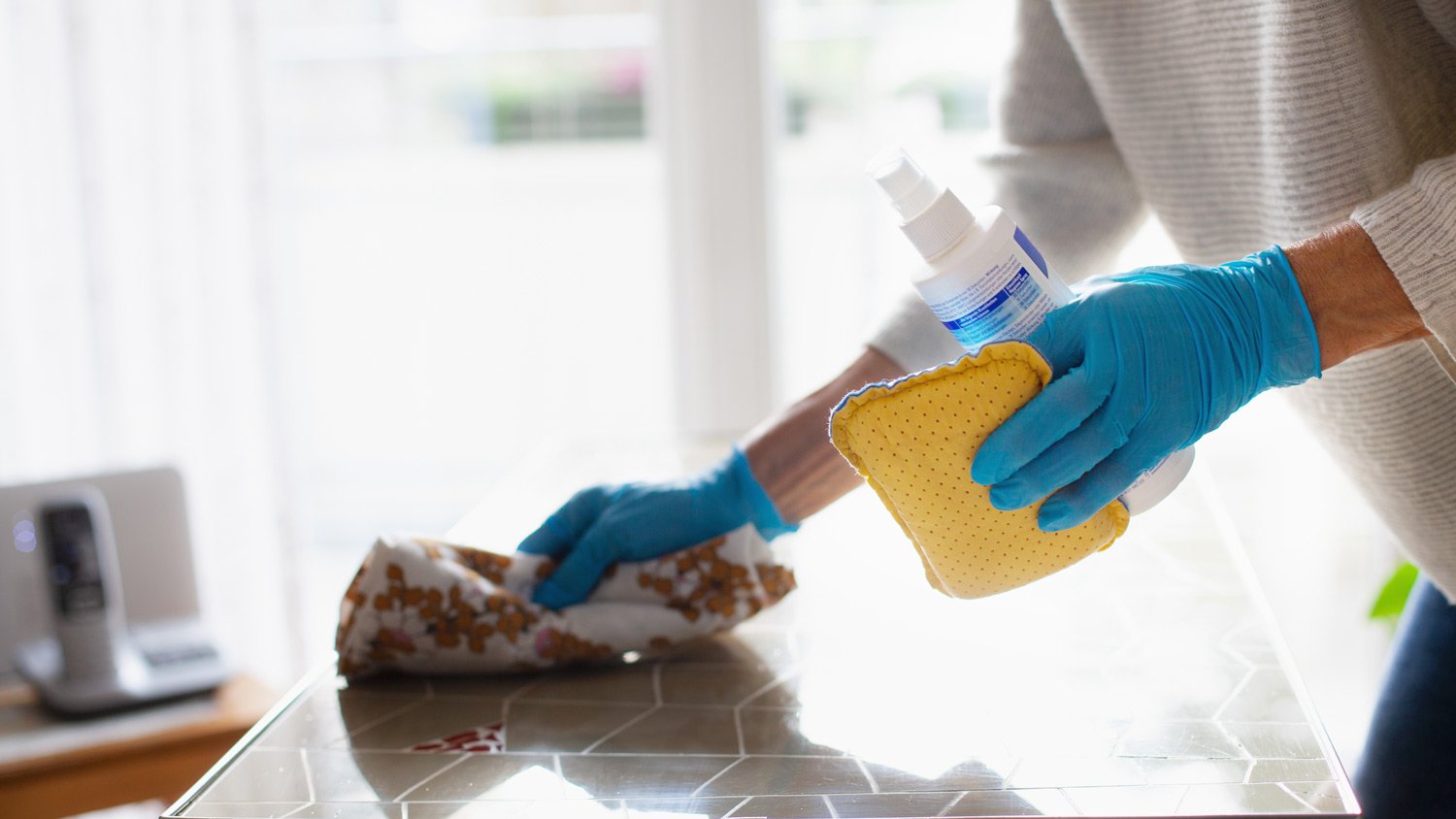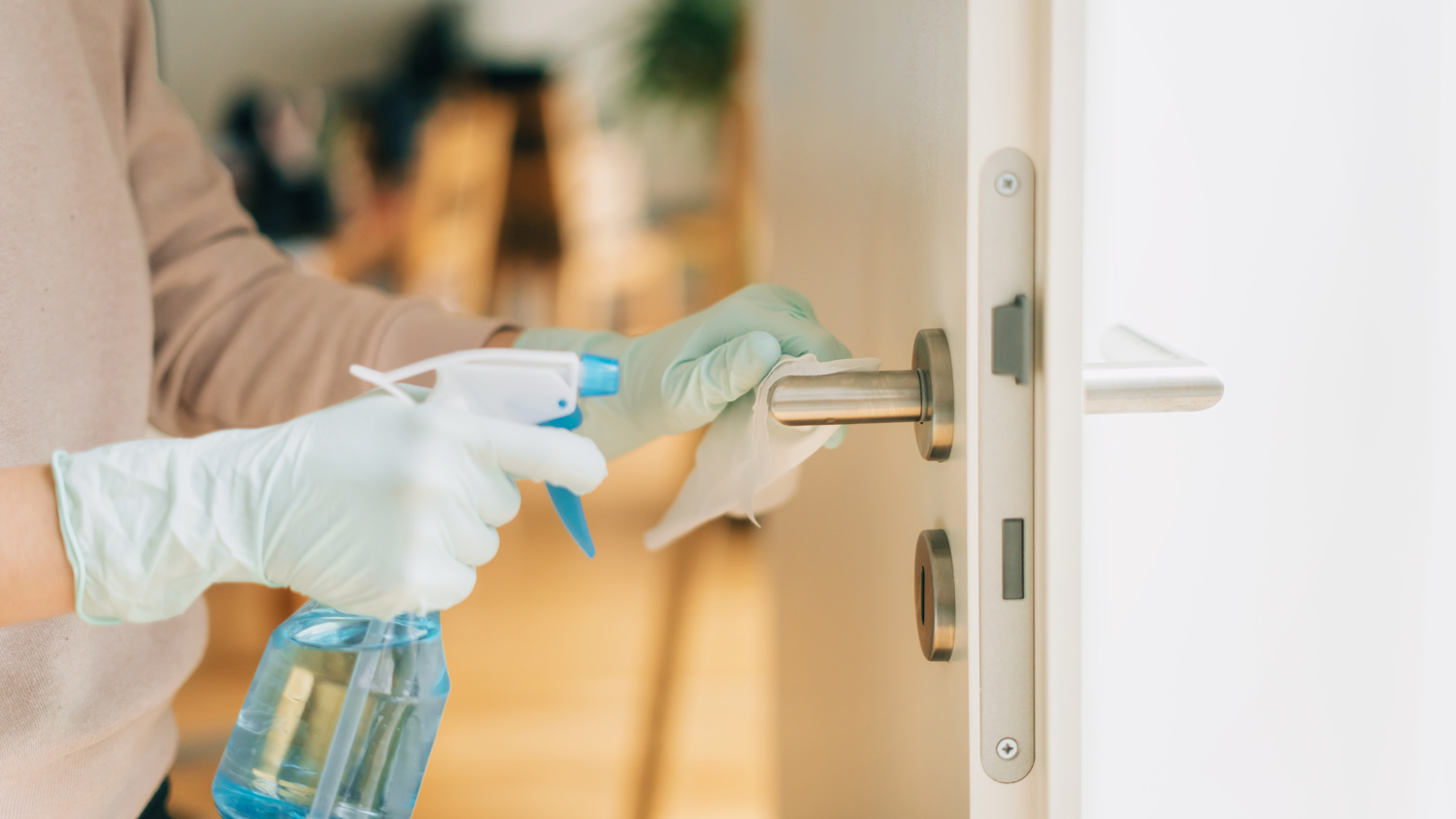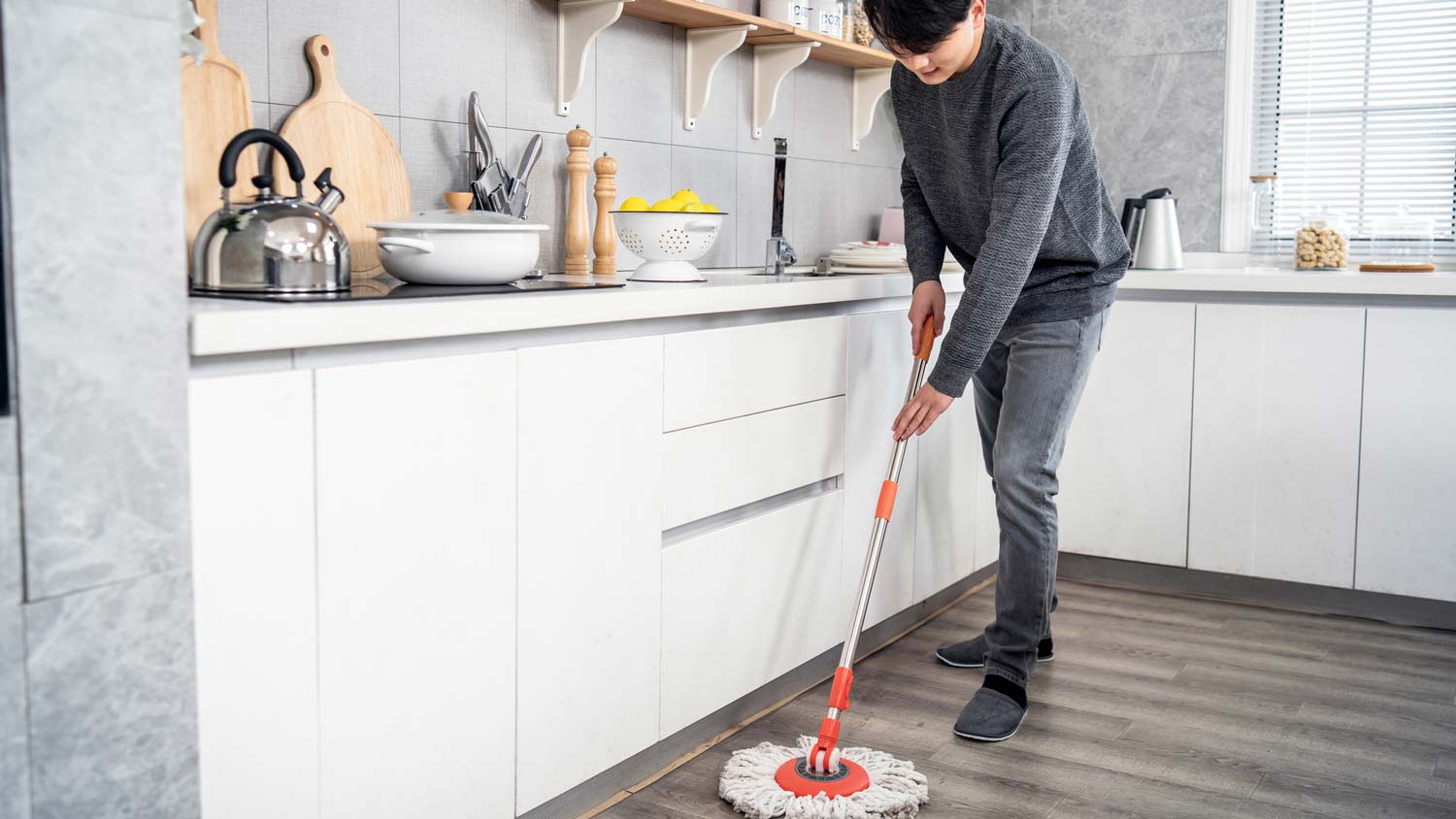How To Disinfect Your Home
Sometimes, you just want to kill all. the. germs. Here's how.


Germs, bacteria, and even mold can all lurk unseen on your home’s surfaces. Staying on top of regular cleaning tasks can lower the presence of these unwanted visitors in your home, but sometimes you will still need to give your home a deep, disinfecting clean. This is especially true after someone in your home has been sick.
When it comes to fighting germs, you’ll want to break down your disinfecting process into two different categories: the one you do while you're in the middle of an illness and the one you do after an illness has passed. While you may not be up to doing a deep clean if you’re the one who has come down with a virus, cold, or infection, there are several steps you should still take to mitigate the spread of germs.
Cleaning and Disinfecting While Sick

Nobody likes being sick. When you add in the fact that you may still have to take care of your household chores while you’re feeling under the weather, it can seem like a big task. This is why cleaning and disinfecting while you’re in the middle of an illness should focus specifically on high-touch areas that might cause you to recontaminate yourself or infect anyone who enters your home to bring you chicken soup.
Of course, if you have someone else around who isn’t sick and can take over these tasks for you, that would be ideal.
Clean Away Dust and Debris
Prior to disinfecting, you’ll want to make sure your surfaces are clean. That means wiping them with a household cleaner to remove any dirt or debris before you begin treating them. You should allow them to dry before applying disinfectant.
Disinfect Your Surfaces
Disinfecting kills any remaining germs on surfaces and reduces the spread of germs, according to the Centers for Disease Control. Before you get started, you’ll want to be sure that you’re using a cleaning product from the EPA List N, which can kill viruses like SARS-CoV-2 and others that can cause serious illness.
Carefully Read the Directions
Follow the directions on your disinfectant. Not all sanitizing and disinfecting agents are created equal. Some will require you to leave the surface you’re cleaning wet for a certain amount of time (also known as the contact time) before wiping them clean.
Other disinfectants will require you to leave the cleaner on the surface to dry. Following the directions on your spray will ensure that you get rid of germs effectively. You should continue cleaning all of the high-touch surfaces in your home as you use them to prevent spreading germs.
Be Safe While Cleaning
The last thing you want to do while you’re sick is make yourself feel worse, so you’ll want to make sure you’re extra careful to get plenty of ventilation and wear safety gear like gloves or goggles while cleaning and disinfecting. Most importantly, wash your hands as soon as you're done. And “if the disinfectant is in an aerosol can, make sure there is ample ventilation,” says Asya Biddle, Angi Expert Review Board member and manager of The Dust Busters janitorial company in Williamsport, PA.
Cleaning After an Illness
If the illness has already passed in your home, then it’s time to say goodbye to those germs and bacteria for good. The good news is that unlike when you are actively sick, disinfecting your home after you’ve been ill is easier. You’re not only physically feeling a little better, but you also don’t have to continue to sanitize all of your surfaces as you use them.
You’ll want to begin disinfecting your most high-touch surfaces (like doorknobs, light switches, and bathrooms) by giving them a good surface cleaning with a household cleaner. Once the surface has been scrubbed, you’ll want to use a product from the EPA List N.
Carefully Read the Directions
Double-check the contact time required for the cleaner you’re using, and be sure to follow the manufacturer’s recommended waiting period before you wipe off any remaining areas. Some disinfectants will require you to leave the cleaner on the surface to dry.
Following the directions on your disinfectant will ensure that you get rid of the germs you’re most worried about (and that you don’t end up making yourself sick in the process).
Be Safe
To avoid reinfecting yourself or picking up a bug from someone else in your home, you’ll want to take certain precautions. Be sure the area you’re disinfecting has plenty of ventilation, that you’re wearing a mask (this is especially important if you’re disinfecting after a highly contagious illness), and wearing safety gear like gloves and goggles while cleaning.
Disinfecting Specific Surfaces

Your home has two main types of surfaces: hard and soft. Hard surfaces are ones like countertops, doorknobs, and light switches, and you can clean them by following the directions listed above.
Soft surfaces, on the other hand, are ones like carpets, laundry, and sofas. Because these areas differ so greatly—sadly, you can't just throw your whole sofa into the washer the way you can your soiled sheets—the way you actually disinfect them will vary.
Disinfecting Soft Surfaces
To disinfect your soft surfaces that can’t be laundered, you’ll want to make sure you clean them with hot water and the appropriate detergent. For sofas and carpets, you’ll want to spot clean the area first to make sure you don’t do any damage while you’re disinfecting. Once you remove any surface dirt, you’ll want to use a suitable cleanser for that surface from the EPA List N.
If you can launder your soft surfaces, well, then you’re in luck. All you’ll need to do is rinse any soiled items out in the sink before tossing them in the wash (but be sure to wash your hands and sanitize the sink after handling them). Use the warmest water that is safe for your clothes or linens with your regular detergent.
If you used a laundry basket to transport these items, you’ll want to make sure you’re following the hard surface disinfecting directions and cleaning it as well.
Regular Cleaning Can Help
Not only can regular cleaning make disinfecting your home easier when it comes time, but it can also help you stay healthier. Regularly cleaning high-touch surfaces in your home will help remove virus particles, sometimes before they’ve had a chance to make you sick. This includes maintaining your hard surfaces by mopping, dusting, and vacuuming regularly.
You can also call on a local house cleaning pro who can help free up precious time in your schedule and make sure your home remains sparkling.





- House Cleaning Services
- Housekeeping Services
- Tile Grout Cleaners
- Move Out Cleaners
- Deck Cleaning Services
- Same Day House Cleaning
- Ultrasonic Cleaning
- Apartment Cleaners
- Vinyl Siding Cleaning
- Mattress Cleaners
- Kitchen Hood Cleaning
- Emergency Cleaning Services
- Housekeeper Agencies
- Residential Cleaners
- Cleaning Crews
- Couch Cleaning
- Garage Cleaning Services
- Odor Removal Services
- Commercial Cleaning Services
- How to Clean Your House During and After an Illness
- 10 Tips for Disinfecting Your Bathroom
- How to Hire Someone to Disinfect Your Home
- 6 Spots You Can Clean at Home to Prevent Winter Sniffles
- Learn How to Clean Your House (and Maybe Even Have Fun Doing It) With These 27 Tips
- Why Hiring Cleaners Before Move-In Can Help You Settle in Stress-Free
- Which Home Projects To Put On Your To-Do List First After Moving
- 8 Sneaky Places Germs Are Hiding in Your Bathroom
- 6 Tips to Prepare for a Successful Home Remodel
- How to Build a House: Your Complete Guide to the Home-Building Process











